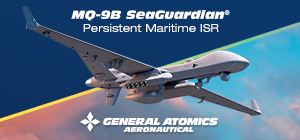
Following extensive drop-pit trials and integration activities, an MBDA METEOR has now flown for the first time on an F-35, presumably an instrumented test aircraft. The aircraft was a USMC F-35B from Squadron VX-23, NAVAIR's largest flight test organization, at Patuxent River.
The news, released by the british Royal Air Force, is accompanied by photos showing a METEOR carried at the air-to-ground station within the weapon bay, with an AMRAAM on the door station. The images also reveal the METEOR is, as expected, fitted with “clipped” fins to reduce volumes.
The integration of METEOR on the F-35 has been demanded by the United Kingdom and has subsequently seen Italy joining the effort. At present, the UK leads the integration effort on the F-35B, with Italy having taken responsibility to drive forth integration on the F-35A.
Integration activities were kick-started all the way back in April 2017 when the UK awarded MBDA a contract worth GBP41 million (USD52.5 million) to ensure METEOR could be added to the F-35’s arsenal.
It is intended that up to 4 METEORs will be carried internally into the F-35B; it’s not clear if it is planned to go for a 6-missile solution on the F-35A like is planned for AMRAAM.
It is expected that METEOR integration will achieve operational capability towards the end of the decade. The precise date is still uncertain but not before 2027. In the meanwhile, the UK will be using AIM-120 AMRAAM D3s which have recently been certified for use.
In December 2023 the US Operational Test Team was expended with a new Memorandum of Understanding to include Australian and UK personnel for the test, development and evaluation phase of Block IV capability, which up to then had been US-only. The test force was formally renamed United Operational Test Team, an important passage in ensuring UK personnel can oversee METEOR (and SPEAR 3 integration activities).
The Royal Air Force is also, with the particular exception of Israel, the only non-US force with instrumented F-35s used in test and evaluation, with 3 such jets based at Edwards AFB in the US. However, these test jets, belonging to very early production lots, are now being de-instrumented to join the operational fleet.
A recent contract award by the US DoD strongly suggest new instrumentation sets are being procured, probably for installation of some of the new-production UK jets, but the “partner” nation was not named so at present uncertainty persists on whether the RAF is replacing BK-1, BK-2 and BK-4 with new, native TR3/Block IV instrumented jets of its own.








.png)
